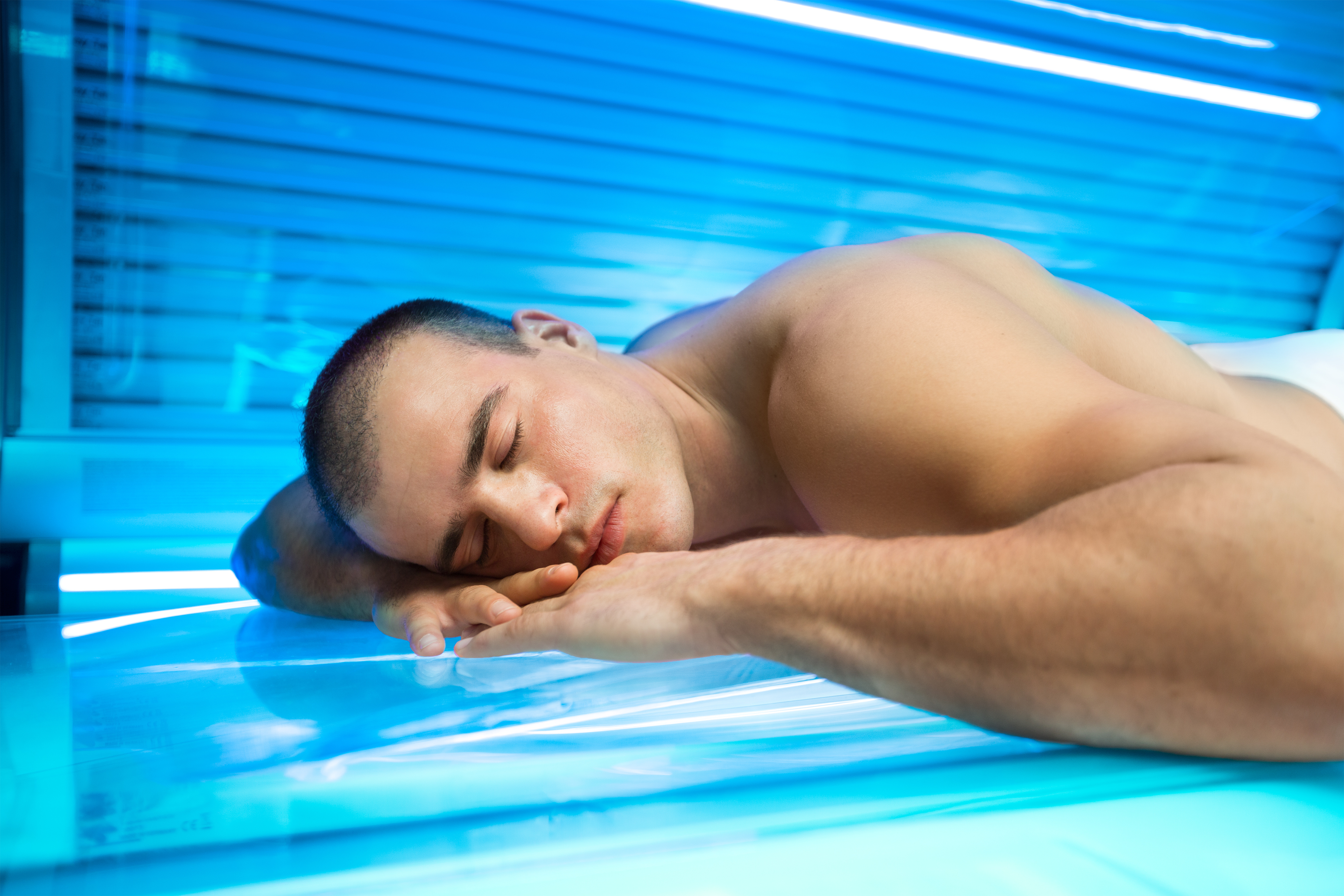Many Dermatologists and Psychiatrists prescribe phototherapy to patients for numerous conditions. Skin conditions such as psoriasis, vitiligo, scleroderma, and others can be helped by phototherapy. It can also be highly effective in treating seasonal affective disorder (SAD) as well as in cosmetic procedures. Patients sometimes take it upon themselves to get treatment from tanning beds, also known as indoor tanning. As a physician, it is important that you educate them on the risks and differences between phototherapy and tanning.
Phototherapy vs. Tanning
Phototherapy (light therapy) exposes the skin to UV light on a regular basis under medical supervision. There are many different types of therapy that use varying ultraviolet lights. UVB, Psoralen + UVA (PUVA), and laser treatments are all examples of light therapy used in treating psoriasis. Light Boxes are the main form of treatment for seasonal affective disorder.
Ultraviolet B (UVB)
UVB treatment can slow the growth of affected skin cells by exposing the skin to artificial UVB for a length of time on a regular schedule. The two types of UVB are broadband and narrow band. Narrow band UVB lights release a smaller range of ultraviolet light compared to broadband.
UVB light can take a bit longer to treat psoriasis, and it can worsen before it starts to improve. The benefit of having UVB light therapy in a medical setting is that the amount of light administered can be reduced and monitored to best fit each individual. UVB is known to work better than UVA light in treating psoriasis.
Psoralen + Ultraviolet A (UVA)
UVA can penetrate deeper into the skin than UVB, and Psoralen makes skin more sensitive to light. Normal sessions with UVA alone take about 20 minutes, while UVA + Psoralen takes about 2 minutes. This method is usually only used when the psoriasis is disabling and other treatments have proved unsuccessful.
Light Boxes
People with SAD start to feel signs of depression when the days get shorter and the nights are longer. The feelings can fade once spring rolls around, but many psychiatrists suggest light boxes as a form of treatment. Although not appropriate for everyone, this form of light therapy involves sitting close to a special “light box” for 30 minutes a day.
Most boxes provide white light at 10,000 lux (a measure of light intensity), while a bright sunny day is usually 50,000 lux or more. The normal indoor lighting is about 100x less bright than the light box intensity. Researchers are working on improving light boxes by having boxes that simulate sunrise, gradually increasing intensity.
Some people cannot handle the bright light, and some need brighter light. Your patient should only be using light boxes if you warrant it safe for them. All treatment options should be reviewed, and it is important to note that light boxes are not FDA approved.
Light boxes for SAD are designed to filter out UV lights making them less harmful to skin and eyes. There light boxes are designed to treat skin conditions, which will have more UV light and can be more dangerous. Be sure that your patient is buying and using the correct type.
Indoor Tanning
Most tanning beds radiate UVA light, not UVB. So if your patient is thinking about using one to treat psoriasis, it may not be beneficial. Tanning is the main cause of skin cancer, and using indoor tanning as a form of phototherapy can be even more dangerous.
Patients might be drawn to use indoor tanning because they’ll benefit from a nice tanned look, and think it is safe because it is controlled. Sure, you can set a timer for it to turn off, but indoor tanning does not control the intensity or administration like physicians subscribing phototherapy can.
Patients with SAD may also look to regularly tanning at a salon in order to get the happy feeling and warmth that sunlight gives them. While sunlight can certainly give those feelings, the majority of light boxes designed for SAD do not involve UV lights. So really, it could be more damaging than beneficial.
Outdoor Tanning
Both UVA and UVB are present in natural sunlight, making it a better option than indoor tanning, but still dangerous. It can be hard for people to limit their time in the sun and adequately protect their skin, so be sure to address this with patients. Laying out all day in the sun is not healthy for the skin, and may not give the treatment results patients are looking for.
Short and regular exposures to sunlight are recommended, starting with 5-10 minutes of sun daily. Patients need to wear sunscreen on areas unaffected by skin conditions. If the skin can handle it, slowly increase exposure. Make sure to check if your patient is developing any signs of skin damage, and let them know immediately. Also, inform them if any topical medications they are using that would increase the risk of sunburn.
Always keep in mind the dangers of any UV light exposure, and be sure your patient understands the risk of any form of phototherapy.

